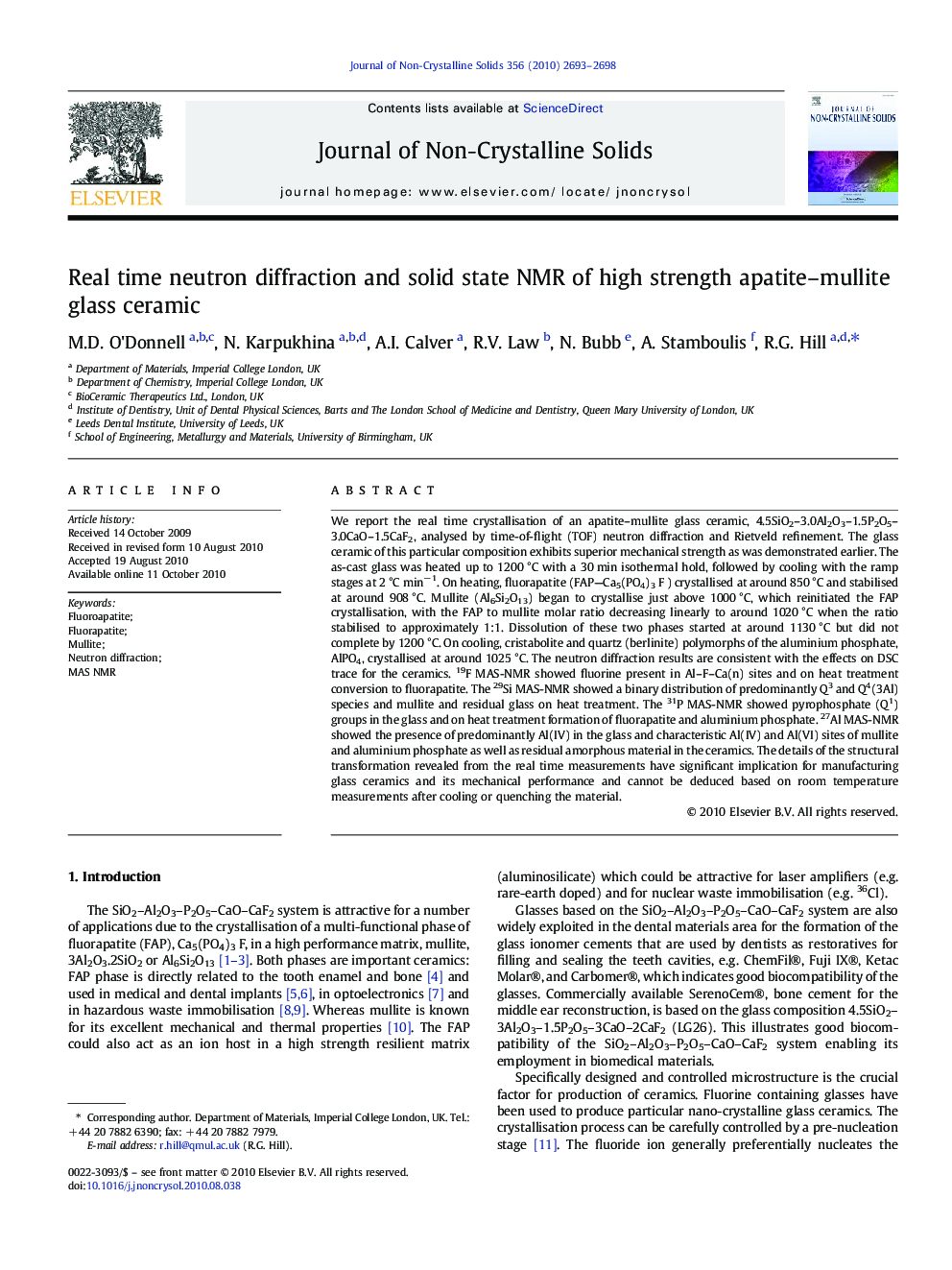| Article ID | Journal | Published Year | Pages | File Type |
|---|---|---|---|---|
| 1482815 | Journal of Non-Crystalline Solids | 2010 | 6 Pages |
We report the real time crystallisation of an apatite–mullite glass ceramic, 4.5SiO2–3.0Al2O3–1.5P2O5–3.0CaO–1.5CaF2, analysed by time-of-flight (TOF) neutron diffraction and Rietveld refinement. The glass ceramic of this particular composition exhibits superior mechanical strength as was demonstrated earlier. The as-cast glass was heated up to 1200 °C with a 30 min isothermal hold, followed by cooling with the ramp stages at 2 °C min−1. On heating, fluorapatite (FAP—Ca5(PO4)3 F ) crystallised at around 850 °C and stabilised at around 908 °C. Mullite (Al6Si2O13) began to crystallise just above 1000 °C, which reinitiated the FAP crystallisation, with the FAP to mullite molar ratio decreasing linearly to around 1020 °C when the ratio stabilised to approximately 1:1. Dissolution of these two phases started at around 1130 °C but did not complete by 1200 °C. On cooling, cristabolite and quartz (berlinite) polymorphs of the aluminium phosphate, AlPO4, crystallised at around 1025 °C. The neutron diffraction results are consistent with the effects on DSC trace for the ceramics. 19F MAS-NMR showed fluorine present in Al–F–Ca(n) sites and on heat treatment conversion to fluorapatite. The 29Si MAS-NMR showed a binary distribution of predominantly Q3 and Q4(3Al) species and mullite and residual glass on heat treatment. The 31P MAS-NMR showed pyrophosphate (Q1) groups in the glass and on heat treatment formation of fluorapatite and aluminium phosphate. 27Al MAS-NMR showed the presence of predominantly Al(IV) in the glass and characteristic Al(IV) and Al(VI) sites of mullite and aluminium phosphate as well as residual amorphous material in the ceramics. The details of the structural transformation revealed from the real time measurements have significant implication for manufacturing glass ceramics and its mechanical performance and cannot be deduced based on room temperature measurements after cooling or quenching the material.
